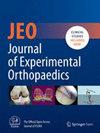Hamstring autograft, bone-patellar-tendon-bone autograft and synthetic graft in primary anterior cruciate ligament reconstruction: A meta-analysis of comparative studies
Abstract
Purpose
Anterior cruciate ligament reconstruction (ACLR) yields favourable results, but failure and reinjury rates are still a concern. Graft choice is a modifiable risk factor for surgeons to avoid failure. The topic of optimal graft selection remains a subject of ongoing debate. Graft choices include autografts, allografts and synthetic grafts. The purpose of this meta-analysis was to compare functional outcomes and complications between autografts, hamstring (HT) tendon and bone-patellar-tendon-bone, and synthetic graft in primary ACLR.
Methods
The PubMed, MEDLINE, Scopus and Cochrane Central databases were used for the research, and nine studies were included. The first author, journal name, year of publication, patient demographics, type of surgery, type of graft used for ACLR, time from injury to surgery, and follow-up period were recorded. The data extracted for quantitative analysis included Lysholm activity scale score, Tegner activity scale score, International Knee Documentation Committee (IKDC) score, laxity measured with the KT-1000 knee arthrometer (KT-1000), number of complications, re-rupture, and re-intervention rates. Random and fixed effect models were used for the meta-analysis of pooled mean differences (MDs) and odds ratios (ORs).
Results
A total of 734 patients were identified, 377 of whom underwent ACLR with autograft and 326 with synthetic graft. The mean age was 28.7 ± 20.3 and 31.6 ± 9.3 years for the ACLR with autograft and ACLR with synthetic graft groups. The mean follow-up durations were 82.3 ± 38 and 81.4 ± 39.2 months. Comparable postoperative Lysholm knee score (p = 0.06), Tegner activity scale score (p = 0.64) and IKDC score (p = 0.15) were found between groups. Significantly greater knee laxity was found in the autograft group (2.6 ± 1.4 and 1.5 ± 1.4 mm; MD = 1.22, 95% confidence interval [CI]: 0.96, 1.48; p < 0.001). Comparable overall complications (p = 0.70), re-rupture (p = 0.81) and re-intervention (p = 0.85) rates were found between groups.
Conclusions
Compared to ACLR with HT autograft, the ACLR with synthetic graft showed statistically but not clinically important decreased knee laxity. Comparable functional outcomes, complication and re-rupture rates were found between the two groups.
Level of Evidence
Level I, meta-analysis.

 求助内容:
求助内容: 应助结果提醒方式:
应助结果提醒方式:


